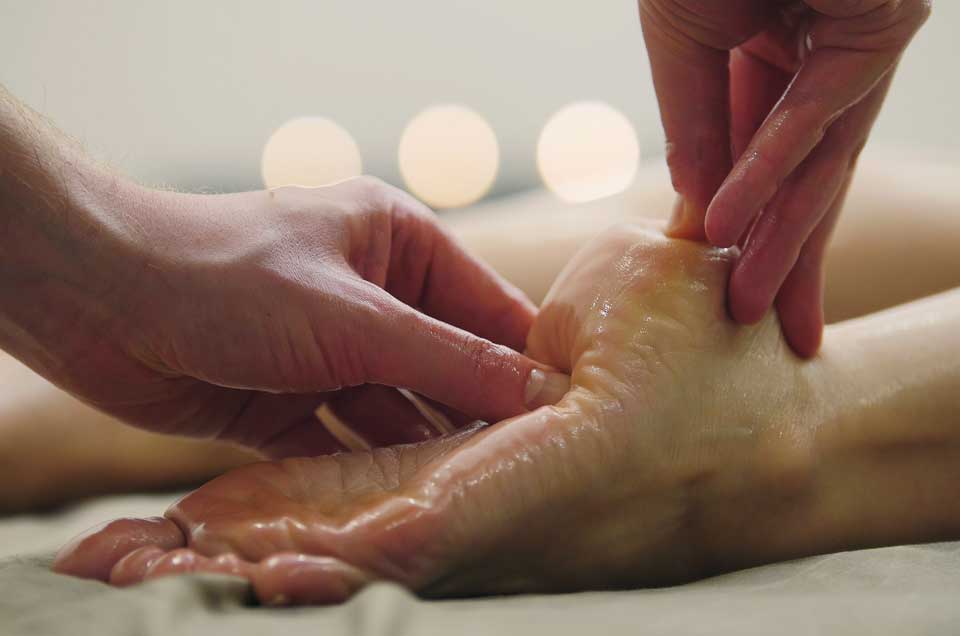Ayurveda, an ancient system of medicine, harnesses the power of herbs and specialized exercises to address a variety of health concerns, including muscle pain, leg discomfort, and joint issues. This section presents a collection of effective Ayurvedic home remedies aimed at easing leg pain, muscle soreness, joint discomfort, spasms, and sprains:
Potent Herbal Remedies:
Eucalyptus Oil (Nilgiri): Derived from the Nilgiri plant, eucalyptus oil has a prominent place in Ayurveda for its capacity to reduce inflammation and provide relief from muscle and joint pain. Regular application of this oil to the affected areas can contribute to reduced inflammation and diminished joint pain.
Yogaraja Guggulu: This traditional Ayurvedic blend, crafted from the guggulu herb, stands out as a valuable aid in alleviating joint pain. It aids in loosening joint stiffness, enhancing joint flexibility, and fostering increased mobility, making it an effective solution for joint discomfort.
Nirgundi: Highly regarded for its anti-inflammatory and antioxidant attributes, nirgundi emerges as a key herb in Ayurvedic practices for managing arthritis and joint pain. Regularly massaging with nirgundi oil can help alleviate both joint and muscle pain.
Holistic Joint and Muscle Relief through Yoga:
Yoga offers a comprehensive exercise regimen that promotes supple joint mobility and sustained energy throughout the day. Specific yoga poses, or asanas, have been designed to address muscle pain, joint discomfort, spasms, and sprains across various body regions. A few of these beneficial poses are outlined below:
Ardha Pincha Mayurasana (Dolphin Pose): This pose commences from a forearm plank position. Following this, intertwine your fingers and gradually move your feet towards your hands, ensuring not to overextend. Find a comfortable position where your heels touch the ground. While maintaining proximity of your elbows, breathe deeply and relax. Over time, with consistent practice, aim to enhance the stretch with each breath.
Ardha Shalabhasana (Half Locust): Lie on your stomach with your hands alongside your body. Inhale deeply and exhale slowly as you lift your right leg around 5-6 inches off the ground. Maintain this position while taking deliberate, profound breaths. Repeat for both legs, and if needed, use one leg to support the raised leg.
Vajrasana (Thunderbolt Pose): Begin by kneeling and then sitting on your feet to reduce pressure on your knees. This asana significantly contributes to muscle strengthening and joint relaxation.
Balasana (Child Pose): Transition into Balasana from Vajrasana. Inhale deeply, and as you exhale, gently lower your upper body towards the ground, extending your arms forward. Over time, you can gradually intensify the stretch with each breath.
Muscle and joint discomfort can significantly impede daily activities. Ayurveda, with its holistic principles, offers effective and natural strategies to manage such issues. From herbal solutions like eucalyptus oil, Yogaraja Guggulu, and nirgundi to the practice of yoga asanas tailored for muscle and joint relief, Ayurveda provides a comprehensive approach. Always remember that individual responses can vary, and consulting a healthcare professional before integrating new practices is advisable.
The insights provided in this article shed light on Ayurvedic methodologies to address muscle and joint discomfort. It’s encouraging to know that Ayurvedic products are gentle, natural, and can contribute to overall wellness. If you’re seeking relief from muscle or joint pain, consider exploring the Ayurvedic offerings from Kerala Ayurveda’s website. These products, designed to promote well-being, can be conveniently ordered online and delivered to your doorstep. Embrace the potential of natural wellness through Ayurveda.

